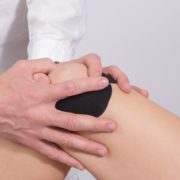Knee Surgery Gone Wrong? It’s More Common Than You Think.
Arthroscopic knee surgery is one of the most common surgeries performed. Despite research telling us that it’s not nearly as effective as most people are led to believe.
Science tells us that people who do undergo arthroscopic knee surgery are likely to have knee arthritis that advances rapidly. This results in a total knee replacement that you could avoid.
Arthroscopic knee surgery is a minimally invasive procedure that’s commonly done to help “clean out” your knee joint. It’s done if you’ve got degenerative arthritis, or to clip out pieces of a torn meniscus that might be irritating your knee.
Sounds pretty simple and harmless – right?
Well… it is until it isn’t.
The big problem is that arthroscopic knee surgery is not necessary for most cases of knee pain.
If there is a complication – which there are many even with “minimally invasive” procedures – you could end up being worse off than when you went in.
Plus – if you never even needed the surgery to begin with – you just put your knee through unnecessary trauma that you’ve got to now heal from. This further delays you from addressing the root cause of your knee pain.
The truth is that most people can get full relief of their knee pain as well as full restoration of knee function without any type of surgery or procedure. This is true for 70% of all knee pain cases.
An early research study from 2002 by JB Moseley and colleagues, and published in the New England Journal of Medicine, revealed that placebo surgery for advanced knee arthritis was just as effective as actual arthroscopic surgery.
Since then, numerous studies have proven similar results. This means that even if you have a torn meniscus or degenerative arthritis in your knee – you can still get better naturally and with conservative treatment.
So why then – despite all this research – are surgeons still performing arthroscopic knee surgery more than ever?
In some cases it’s just what the surgeon knows, and they haven’t kept up with the research. Other times, it’s due to poor conservative management of knee pain. If you’ve gotten physical therapy and it wasn’t effective, people believe that the physical therapy “didn’t work”.
But more often than not, you just haven’t found the right physical therapist yet – someone who understands how to diagnose knee pain properly and get you the customized approach that is required to avoid surgery.
And then there’s the elephant in the room…
It’s very common for knee pain to be coming from somewhere other than your knee. Knee pain can come from your ankle, hip, or back. One study showed that 40% of the time – knee pain is caused by your back – even when you don’t have any back pain.
MRI’s add even more confusion to this. It’s entirely possible to have degenerative changes, a torn meniscus, or advanced arthritis in your knee – and still have your knee pain stemming from a source other than your knee.
Over the course of my 20 year career, I’ve seen many knee surgeries go wrong.
Most of the time, it has nothing to do with the procedure itself. It has everything to do with an incorrect diagnosis going in. Say your knee pain can be resolved conservatively. Then you put it through unnecessary trauma (surgery). There’s a good chance you’re going to have more problems afterwards. You get knee surgery when your knee problem isn’t even coming from your knee. Then you’re definitely going to have problems afterwards.
The moral of this story is to make absolutely certain that:
1) Your knee problem is really a knee problem and
2) You’ve fully exhausted all (quality) conservative therapy options before going under the knife.
Remember that 70% of all knee pain cases do not need surgery.
Science has proven this. Don’t resort to knee surgery unless you’re 100% sure you really need it. Because it can go wrong and when it does – it’s much harder to come back from then if you had avoided it to begin with.
Want help with your pain now? CLICK HERE to talk to one of my specialists for free – you can tell them all about your knee pain and we’ll let you know if we can help. 🙂
Dr. Carrie Jose, Physical Therapist and Pilates expert, owns CJ Physical Therapy & Pilates in Portsmouth and writes for Seacoast Media Group. To request a free copy of her Knee Pain Free Report CLICK HERE or to get in touch, email her at [email protected].



